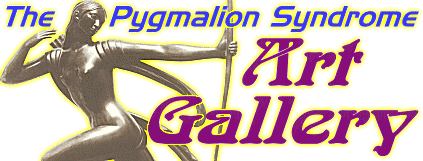
Site Introduction | Art Gallery Index![]() Bertel Thorvaldsen
Bertel Thorvaldsen
(1770-1844)
Various works
JULY 2016: Numerous images added, page width columnized for (hopefully) easier reading
Biography
View Pictures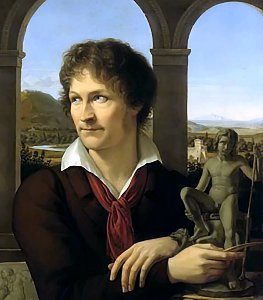 THORVALDSEN or THORWALDSEN, BERTEL (1770-1844), Danish sculptor, the son of an Icelander who had settled in Denmark and there carried on the trade of a wood-carver, was born in Copenhagen on the 8th November 1770.
THORVALDSEN or THORWALDSEN, BERTEL (1770-1844), Danish sculptor, the son of an Icelander who had settled in Denmark and there carried on the trade of a wood-carver, was born in Copenhagen on the 8th November 1770.
While very young he learnt to assist his father; at the age of eleven he entered the Copenhagen School of Art, and soon began to show his exceptional talents. In 1792 he won the highest prize, the travelling studentship, and in 1796 he started for Italy in a Danish man-of-war. On the 8th March 1797 he arrived in Rome, where Canova was at the height of his popularity. Thorwaldsen’s first success was the model for a statue of Jason, which was highly praised by Canova, and he received the commission to execute it in marble from Thomas Hope, a wealthy English art-patron. From that time Thorwaldsen’s success was assured, and he did not leave Italy for twenty-three years.
In 1819 he returned to Denmark, where he was commissioned to make the colossal series of statues of Christ and the twelve Apostles which are now in the Fruenkirche in Copenhagen. These were executed after his return to Rome, and were not completed till 1838, when Thorwaldsen again returned to Denmark. He died suddenly in the Copenhagen theatre on the 24th March 1844 and bequeathed a great part of his fortune for the building and endowment of a museum in Copenhagen, and also left to fill it all his collection of works of art and the models for all his sculpture, a very large collection, exhibited to the greatest possible advantage. Thorwaldsen is buried in the courtyard of this museum, under a bed of roses, by his own special wish.
On the whole Thorwaldsen was the most successful of all the imitators of classical sculpture, and many of his statues of pagan deities are modelled with much of the antique feeling for breadth and purity of design. His attempts at Christian sculpture, such as the tomb of Pius VII in St Peter’s and the Christ and Apostles at Copenhagen, are less successful, and were not in accordance with the sculptor’s real sympathies, which were purely classic. Thorwaldsen worked sometimes with feverish eagerness; at other times he was idle for many months together. A great number of his best works exist in private collections in England.
His not very successful statue of Lord Byron, after being refused a place in Westminster Abbey, was finally deposited in the library of Trinity College, Cambridge. The most widely popular among Thorwaldsen’s works have been some of his bas-reliefs, such as the Night and the Morning, which he is said to have modelled in one day.
See Eugene Plon, Thorwaldsen, sa vie, &c. (Paris, 1880); Andersen, B. Thorwaldsen (Berlin, 1845); Killerup, Thorwaldsen’s Arbeiten, &c. (Copenhagen, 1852); Thiele, Thorwaldsen’s Leben (Leipzig, 1852-1856); C. A. Rosenberg, Thorwaldsen . . . mit 146 Abbildungen (1896; " Kunstlermonographien," No. 16); S. Trier, Thorvaldsen (1903); A. Wilde, Erindringer om Jerichau og Thorvaldsen (1884).
Encyclopaedia Britannica, 1911 edition (public domain text)
Jason with the Golden Fleece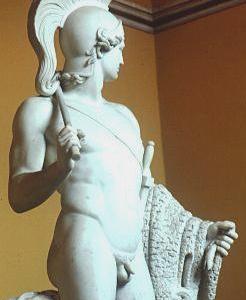
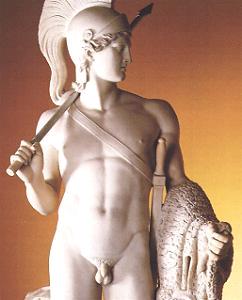
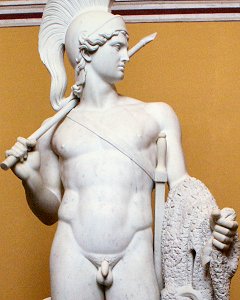
Three views
Ganymede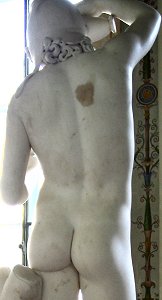
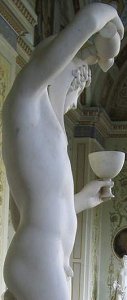
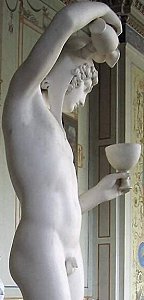
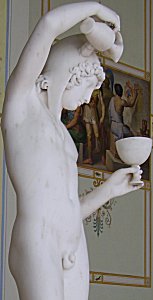
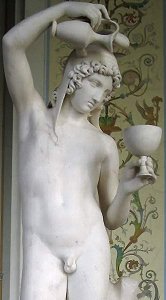
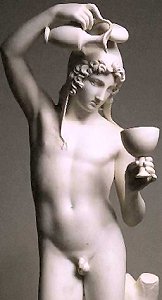
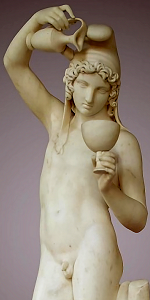
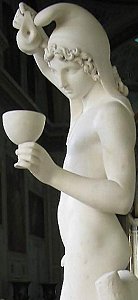
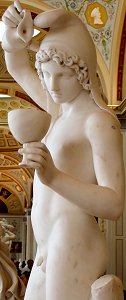
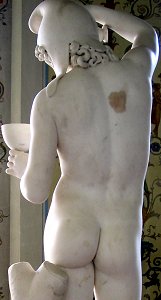
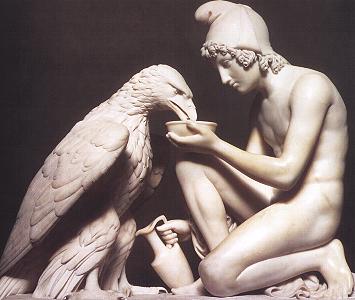
Nine views of Ganymede standing and one of Ganymede with the Eagle of Jupiter
Hebe and Ganymede, and Venus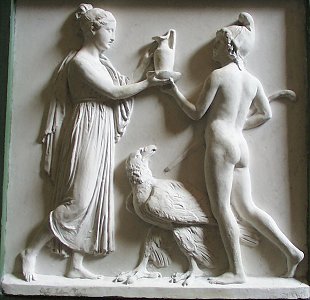
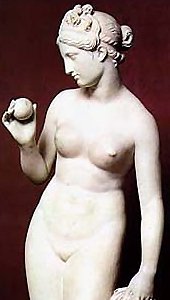
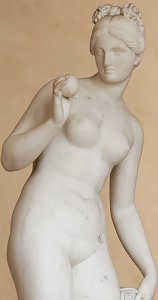
Left: Hebe and (yet again) Ganymede - Jupiter’s two cup-bearers
Centre and right: two views of Venus
Hylas and the Nymphs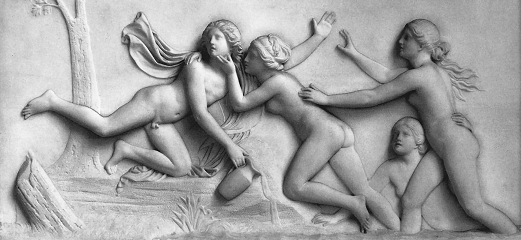
Here we see the youth Hylas, apparently horrified at the prospect of being abducted by lots of beautiful naked women! OK, so he’s Greek, but it surely can’t be that terrible for him... can it?!
Shepherd Boy with Dog
Numerous views taken from various sources. This statue inspired my story The Shepherd Boy, which contains nudity and sexual references but no actual sex scenes.
The close-up face shots and amber-lit views against black backgrounds are of the version in the Thorvaldsens Museum, Copenhagen Denmark, photos by groenling on Flickr. The version with the ornate wallpaper and other works of art is in the Hermitage Museum, St. Petersburg, Russia, photos by various hands. The version in the large room with the chandelier and mirror, with panpipes next to the dog's forepaw, is in Drapers Hall, London, England. Two of the colour photos thereof are by Jon (see below), who also took the flashlit back view of the plaster version in the Thorvaldsens Museum, as well as supplying the above portrait of Thorvaldsen posing with the plaster for this statue. Finally you’ll see a couple of sketches of the statue, by Domenico Marchetti and Ignazio Podio. Podio manages to turn the statue’s rather blank expression into a smile, but also insists on adding a fig leaf.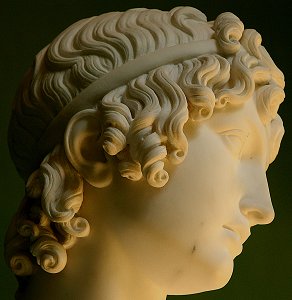
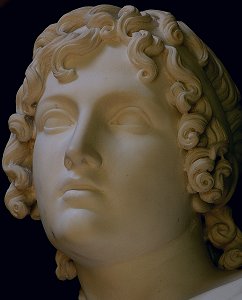
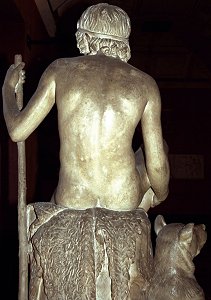
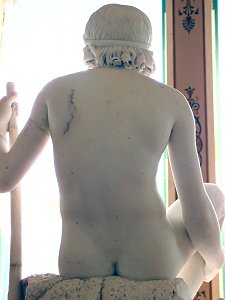
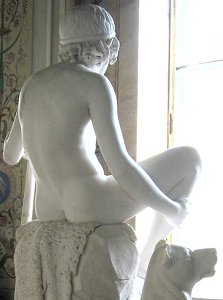
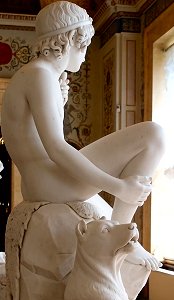
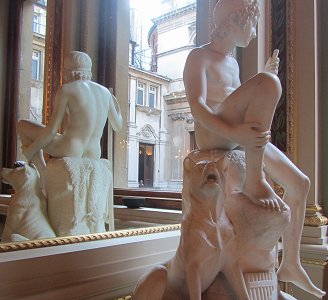
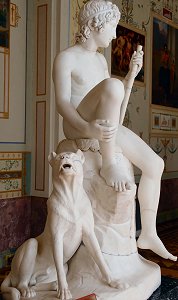
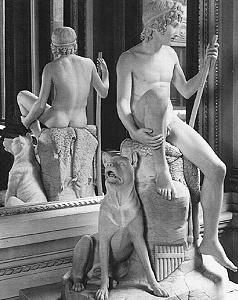
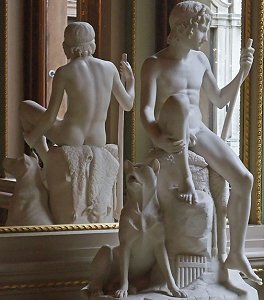
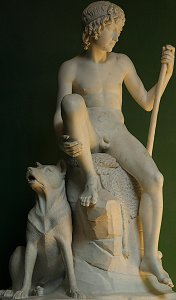
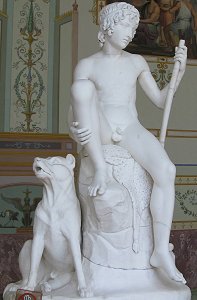
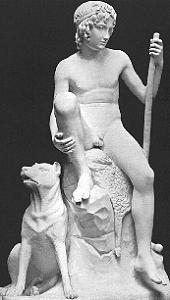
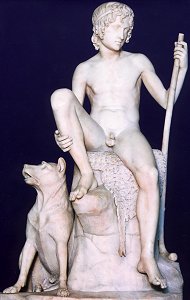
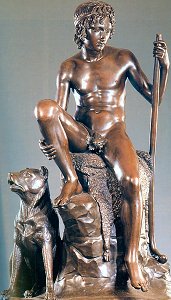
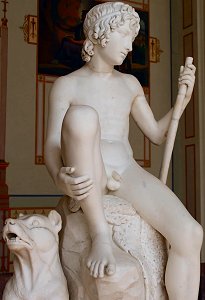
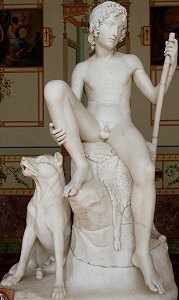
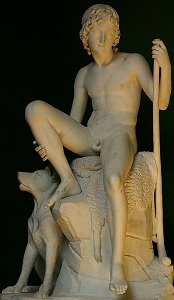
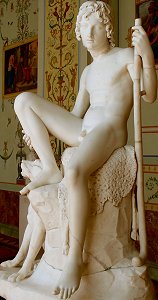
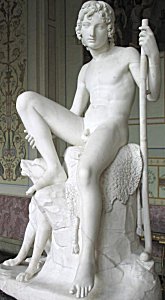
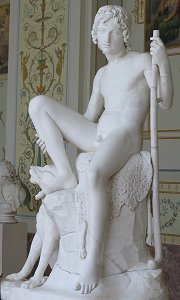
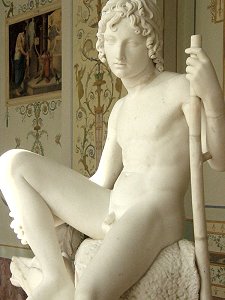
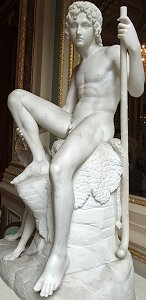
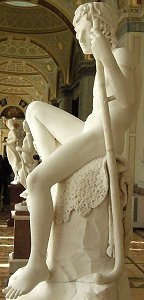
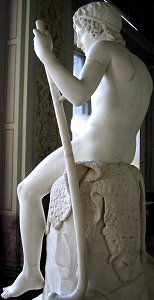
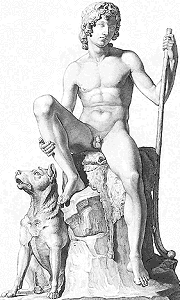
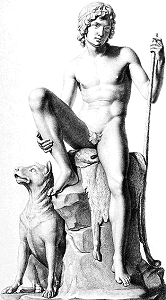
I’m very grateful to Jon, who sent me a couple of additional images and the following information, with abject apologies for not incorporating them and it a lot earlier:
I have studied the sculpture of Bertel Thorvaldsen for many years so can add a little to your information on the “Shepherd Boy”.
Thorvaldsen’s original full sized plaster model survives in the Thorvaldsen Museum in Copenhagen where I have photographed it. They also have a marble version that was purchased from the estate of the English collector Thomas Hope (who also commissioned the splendid “Jason” which was carved twice, both versions are now in Copenhagen).
Using the plaster model Thorvaldsen’s studio carved the Shepherd Boy at least five times. I’ve seen three of them, as well as the one in the Thorvaldsen Museum there is one in the Manchester Museum of Art. The unique one with the pan pipes was originally carved for Lord Grantley but is now owned by the Drapers’ Company, one of the old craft guilds, and is in Drapers Hall in the City of London.
The version in the Hermitage in St Petersburg is thought to be the first carved and bears the distinct marks of an accident at Thorvaldsen’s studio in Rome when the floor collapsed and its head and arm were broken off. I suspect that the now rather obvious breaks were less clear when it was first repaired.
Some of Thorvaldsen’s versions were used as models themselves and copies were made by other studios in bronze, marble and plaster.
Many of these copies ended up outside in formal gardens and examples survive in several British Stately Homes.
The “Shepherd Boy” is a very unusual subject for Thorvaldsen as there is no mythological or biblical basis for the pose. It’s not clear why he produced it as no original records survive. Producing a statue of a nude youth at this period without a link to Greek mythology such as “Ganymede” or a Biblical subject such as “David” would probably have caused some surprise or even shock. I strongly suspect that the addition of the pan pipes to the version carved for Lord Grantley was to link the figure to the legend of “Pan” who was the God of Shepherds and hunting dogs. The boy isn’t Pan himself but it might have provided enough of a link to classical legend to give the Count an “excuse” for his attractive statue of a naked boy.
The story that Thorvaldsen carved the statue after his young model took up the pose during a break from modelling for “Ganymede” has been challenged by some writers as apocryphal. As has the claim that it’s Thorvaldsen’s dog as it’s actually a fairly close, mirror image copy, of a Roman sculpture of a dog in the Vatican collection that Thorvaldsen would have known. One writer even claims that the pose of the boy is “known from antiquity” but I’ve been unable to find a nude example.
Personally I think the “Shepherd Boy” is Thorvaldsen’s masterpiece.
So there you go, more than you needed to know about the “Shepherd Boy”.
Comment on This Page
Site Introduction | Art Gallery Index
Return to Top of Page